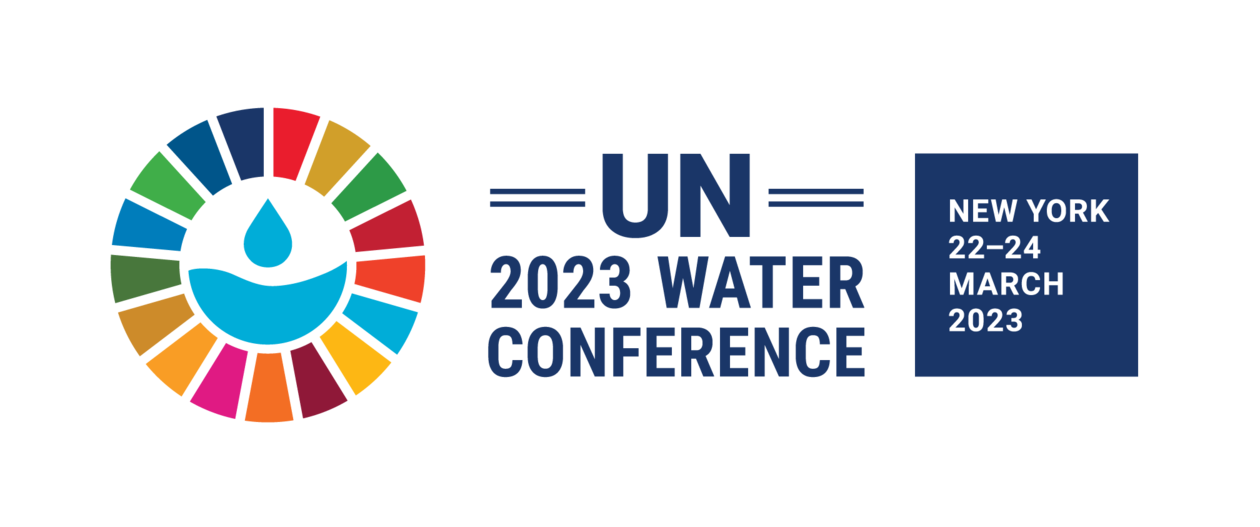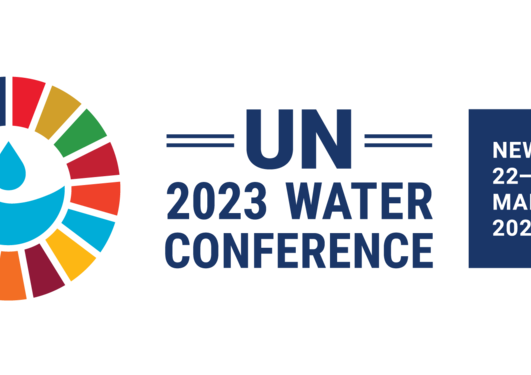Reflecting on the UN 2023 Water Conference
Archaeologist Tore Sætersdal has been a water scientist for many years. In March 2023 he participated in the UN 2023 Water Conference in New York. In this interview, he reflects upon his experiences at the conference.

Hovedinnhold
In summer 2022, the University of Bergen (UiB) started planning its participation in the UN 2023 Water Conference, with archaeologist Dr. Tore Sætersdal and global adviser/science communicator Sverre Ole Drønen the key figures. UiB’s delegation later came to include Professor Edvard Hviding at UiB and Professor Harsha Ratnaweera from the Norwegian University of Life Sciences (NMBU). UiB was one of only a few universities organising an official side event at the conference. Among 1,300 submissions UiB’s side event was among the 200 picked to present inside the UN building in New York as part of the conference.
After end of conference Sætersdal sat down and gave some reflections on why participating in such conferences is of immense use for scientists. Not the least to get in direct dialogue with policy makers.
When the conference first became a subject last summer: what thoughts and possible expectation did you have to be in New York for the conference in March 2023?
“I wasn't sure what to expect. I had never been to this type of event before. At the same time, I was interested in reaching policy makers at a different level than we usually meet at scientific conferences and the type of politicians we meet when we are doing field work in Africa. We meet local officials and lower-ranking government officials, but not the high-level people you meet at the UN. This was a completely new arena to me. One we haven't really explored in the past,” said Sætersdal.
Looking back at the conference now and with a successful side event completed: how has UiB benefited from participating in the conference?
“I'm delighted we went to New York for the conference. We've reached an audience that we don't usually reach. The fact that we were one of only a few universities present, shows the enormous potential for meeting high-level people. We would never have had the director of the International Water Association (IWA) at one of our regular events. The fact that he was present, and several ambassadors attended our side event was special. The fact that we were able to gather people from the Pacific and Africa was something we had never achieved at a normal conference. When we go to a regular conference, it’s limited to Europe or Africa. This is much more extensive than I thought. It was a delight,” says the veteran water scientist.
After consulting the UiB delegation post conference, he highlights two reasons in particular proving why this was a massive success.
“Firstly, all the expert communication on our participation. None of us have experienced this type of communication at anything we have participated in before. Secondly, the composition of our side event and all the people we met and talked to at the conference,” he says.
“There were so many other sessions and side events we attended, of great benefit for us. Such as Harsha at a Big Data vent and myself in an event meeting Uganda’s Prime Minister, Agriculture Minister, and Water Minister. I could have worked for years in Uganda without meeting any of these three and definitely not under the same roof. Here we were even at the same event. Within the space of 10 minutes, I spoke with the PM’s secretary, the water minister, and Uganda’s UN Ambassador. Say no more!”
At the UiB side event four key frontlines of water were presented, highlighting water insecurity. How do you think the side event can contribute to putting these frontlines on the agenda?
“First of all, we can build on the themes. Partly with the people who were present in New York. Also, we can bring this into our future work with Water ESSENCE Africa. In December, IWA will have a major development conference in Kigali, and we have already discussed with IWA director Kala Vairavamoorthy to host a session bringing forward the subjects from the water conference side event.”
He then elaborates on his comment on the composition of people at events like the UN 2023 Water Conference.
“This offers perspectives on the mix of people. When we have a regular session at a regular academic conference, it's scientists talking to scientists. Occasionally we have water professionals, such as engineers, but we don't take it any further. We will now try to put together sessions like the one we did in New York. It taught us something about the topics, which were twisted in relation to what we usually discuss. But it also says a lot about how you arrange events bringing in the policy aspect. This makes everything more interesting.”
“I also liked that we had both Africa and the Pacific involved. Although I’m not entirely sure that everything connected totally, but that’s something we can work on for future occasions. If there is to be a UN Water Conference every two or three years, as many called for and inspired by the UN Ocean Conference, then you could develop the Africa-Pacific nexus.”
Are there any other events beyond the UiB side event that you would like to reflect upon?
“Several side events have stayed with me. Such as the one organised by UNAI's SDG6 Hub, the University of Manitoba with First Nations partners. This was a good mix of all aspects of indigenous water rights. It was very different from our side event, yet interesting and important. I also think the sessions from the New York Harbour School were interesting. There were 200 side events in the UN building alone, with an enormous scope. It was much broader than I expected, which I think is good.”
“Then there are the people you meet. This was a chance to meet people you wouldn't otherwise meet at a scientific conference. And that’s precisely what we’re talking about: the fact that water is precarious and the world’s biggest challenge. We asked if universities are prepared to educate people fast enough and well enough to respond properly. To achieve this, we must be open to new solutions and new partnership. In this respect the conference was a great space to spend three days at. Meeting people you wouldn’t meet otherwise.”
What partners did you meet and what is the takeaway for UiB from this?
“There were some university partners it was useful to meet. Then there were some from the private sector, such as water company Grundfos. And I once again return to the young people from the New York Harbour School, who fascinated me a lot. Voices that you don't hear about otherwise. But also working towards the UN and the UN system, which I was fascinated by. How the UN has such a broad embrace of stakeholders. Finally, the representatives from the Pacific, with whom Edvard has good contact, were extremely fascinating, both ambassador Ilana Seid from Palau and the UN delegation from Tonga.”
During the conference your NORHED II project, Water ESSENCE Africa, was presented after being registered as commitment #SDGAction50451 in the Water Action Agenda. How do you feel about being part of such a big, broad agenda?
“That’s excellent. This is how the UN builds momentum on an issue and capacity building is a hugely important part of the water agenda going forward globally. This is also part of Norad’s agenda and something we are targeting in our university partnerships. It's good to be involved - and to be noticed!”
This is probably also useful when you plan future big applications for funding.
“Not just future big applications. We constantly have smaller applications in process that feed into the main project. Be it to programmes such as UTFORSK or Erasmus+ or national research councils. Now we can add our UN side event and the Water Action Agenda commitment as another tool to be successful when we apply for funding.”
- Check out the following conference related hashtags on Twitter: #WaterAction #UNWC23 #SDG6 #OurWaterWorld

